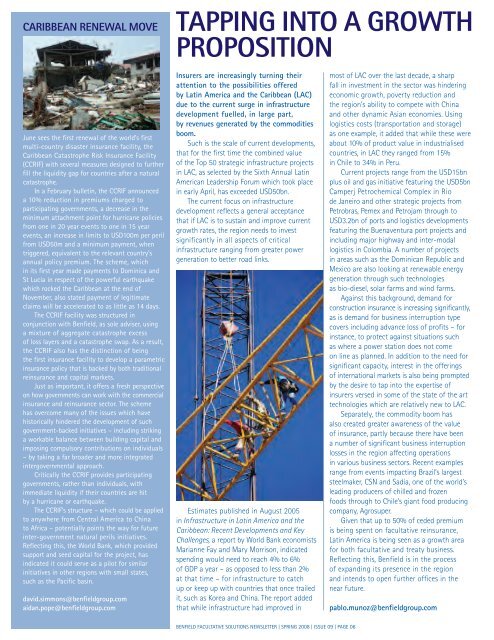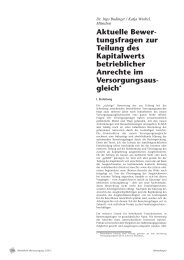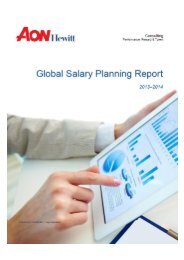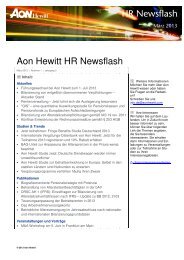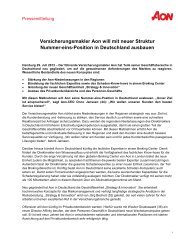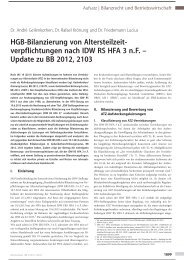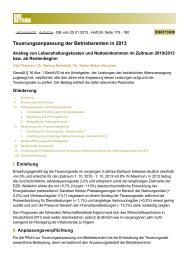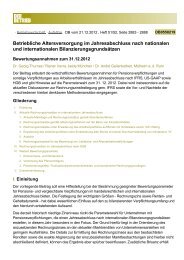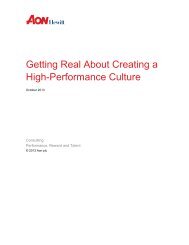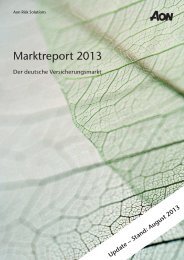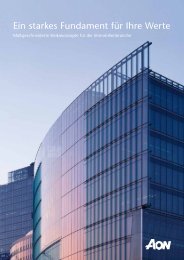09The Fac Report - Aon
09The Fac Report - Aon
09The Fac Report - Aon
You also want an ePaper? Increase the reach of your titles
YUMPU automatically turns print PDFs into web optimized ePapers that Google loves.
CARIBBEAN RENEWAL MOVE<br />
June sees the first renewal of the world’s first<br />
multi-country disaster insurance facility, the<br />
Caribbean Catastrophe Risk Insurance <strong>Fac</strong>ility<br />
(CCRIF) with several measures designed to further<br />
fill the liquidity gap for countries after a natural<br />
catastrophe.<br />
In a February bulletin, the CCRIF announced<br />
a 10% reduction in premiums charged to<br />
participating governments, a decrease in the<br />
minimum attachment point for hurricane policies<br />
from one in 20 year events to one in 15 year<br />
events, an increase in limits to USD100m per peril<br />
from USD50m and a minimum payment, when<br />
triggered, equivalent to the relevant country’s<br />
annual policy premium. The scheme, which<br />
in its first year made payments to Dominica and<br />
St Lucia in respect of the powerful earthquake<br />
which rocked the Caribbean at the end of<br />
November, also stated payment of legitimate<br />
claims will be accelerated to as little as 14 days.<br />
The CCRIF facility was structured in<br />
conjunction with Benfield, as sole adviser, using<br />
a mixture of aggregate catastrophe excess<br />
of loss layers and a catastrophe swap. As a result,<br />
the CCRIF also has the distinction of being<br />
the first insurance facility to develop a parametric<br />
insurance policy that is backed by both traditional<br />
reinsurance and capital markets.<br />
Just as important, it offers a fresh perspective<br />
on how governments can work with the commercial<br />
insurance and reinsurance sector. The scheme<br />
has overcome many of the issues which have<br />
historically hindered the development of such<br />
government-backed initiatives – including striking<br />
a workable balance between building capital and<br />
imposing compulsory contributions on individuals<br />
– by taking a far broader and more integrated<br />
intergovernmental approach.<br />
Critically the CCRIF provides participating<br />
governments, rather than individuals, with<br />
immediate liquidity if their countries are hit<br />
by a hurricane or earthquake.<br />
The CCRIF’s structure – which could be applied<br />
to anywhere from Central America to China<br />
to Africa – potentially points the way for future<br />
inter-government natural perils initiatives.<br />
Reflecting this, the World Bank, which provided<br />
support and seed capital for the project, has<br />
indicated it could serve as a pilot for similar<br />
initiatives in other regions with small states,<br />
such as the Pacific basin.<br />
david.simmons@benfieldgroup.com<br />
aidan.pope@benfieldgroup.com<br />
TAPPING INTO A GROWTH<br />
PROPOSITION<br />
Insurers are increasingly turning their<br />
attention to the possibilities offered<br />
by Latin America and the Caribbean (LAC)<br />
due to the current surge in infrastructure<br />
development fuelled, in large part,<br />
by revenues generated by the commodities<br />
boom.<br />
Such is the scale of current developments,<br />
that for the first time the combined value<br />
of the Top 50 strategic infrastructure projects<br />
in LAC, as selected by the Sixth Annual Latin<br />
American Leadership Forum which took place<br />
in early April, has exceeded USD50bn.<br />
The current focus on infrastructure<br />
development reflects a general acceptance<br />
that if LAC is to sustain and improve current<br />
growth rates, the region needs to invest<br />
significantly in all aspects of critical<br />
infrastructure ranging from greater power<br />
generation to better road links.<br />
Estimates published in August 2005<br />
in Infrastructure in Latin America and the<br />
Caribbean: Recent Developments and Key<br />
Challenges, a report by World Bank economists<br />
Marianne Fay and Mary Morrison, indicated<br />
spending would need to reach 4% to 6%<br />
of GDP a year – as opposed to less than 2%<br />
at that time – for infrastructure to catch<br />
up or keep up with countries that once trailed<br />
it, such as Korea and China. The report added<br />
that while infrastructure had improved in<br />
BENFIELD FACULTATIVE SOLUTIONS NEWSLETTER | SPRING 2008 | ISSUE 09 | PAGE 06<br />
most of LAC over the last decade, a sharp<br />
fall in investment in the sector was hindering<br />
economic growth, poverty reduction and<br />
the region’s ability to compete with China<br />
and other dynamic Asian economies. Using<br />
logistics costs (transportation and storage)<br />
as one example, it added that while these were<br />
about 10% of product value in industrialised<br />
countries, in LAC they ranged from 15%<br />
in Chile to 34% in Peru.<br />
Current projects range from the USD15bn<br />
plus oil and gas initiative featuring the USD5bn<br />
Camperj Petrochemical Complex in Rio<br />
de Janeiro and other strategic projects from<br />
Petrobras, Pemex and Petrojam through to<br />
USD3.2bn of ports and logistics developments<br />
featuring the Buenaventura port projects and<br />
including major highway and inter-modal<br />
logistics in Colombia. A number of projects<br />
in areas such as the Dominican Republic and<br />
Mexico are also looking at renewable energy<br />
generation through such technologies<br />
as bio-diesel, solar farms and wind farms.<br />
Against this background, demand for<br />
construction insurance is increasing significantly,<br />
as is demand for business interruption type<br />
covers including advance loss of profits – for<br />
instance, to protect against situations such<br />
as where a power station does not come<br />
on line as planned. In addition to the need for<br />
significant capacity, interest in the offerings<br />
of international markets is also being prompted<br />
by the desire to tap into the expertise of<br />
insurers versed in some of the state of the art<br />
technologies which are relatively new to LAC.<br />
Separately, the commodity boom has<br />
also created greater awareness of the value<br />
of insurance, partly because there have been<br />
a number of significant business interruption<br />
losses in the region affecting operations<br />
in various business sectors. Recent examples<br />
range from events impacting Brazil’s largest<br />
steelmaker, CSN and Sadia, one of the world’s<br />
leading producers of chilled and frozen<br />
foods through to Chile’s giant food producing<br />
company, Agrosuper.<br />
Given that up to 50% of ceded premium<br />
is being spent on facultative reinsurance,<br />
Latin America is being seen as a growth area<br />
for both facultative and treaty business.<br />
Reflecting this, Benfield is in the process<br />
of expanding its presence in the region<br />
and intends to open further offices in the<br />
near future.<br />
pablo.munoz@benfieldgroup.com


